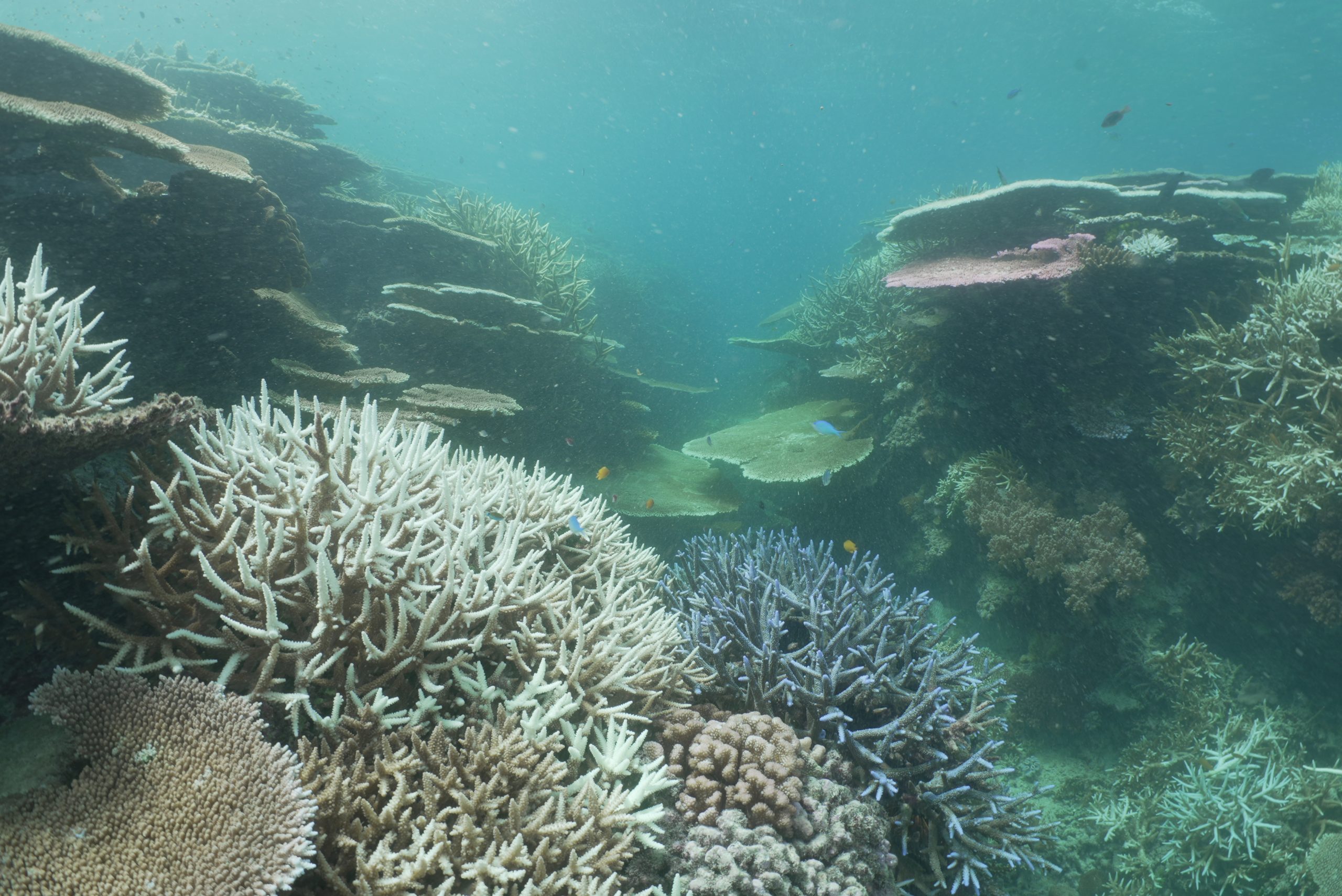Is it possible to ever celebrate regrowth, without first acknowledging injury?
For sure it can happen, coral reefs can bleach, and they can be destroyed by cyclones – and they can regenerate. John Brewer reef as an ecosystem was approaching climax, in all its beauty, when it was smashed – just recently.
How is that a category three cyclone could sit for two hours over the top of one of the most spectacular of all the Great Barrier Reef’s mid-shelf reefs – for two long hours – unleashing such destruction and yet the Australian Institute of Marine Science (AIMS) monitoring program has no record of it?
This event is not recorded as a significant change in hard coral cover, or anything else in their newly released ‘reef-wide hard coral cover’.

Hard coral cover at John Brewer Reef was recorded as just 23 percent before TC Kirrily and that was a complete misrepresentation. Hard coral cover is now officially 17 percent in this latest survey – and so much coral was destroyed in between.
At the reef crest for sure, coral cover went from more than 70 percent to perhaps less than 20 percent in one afternoon.
I watched satellite imagery of the cyclone in real time as it sat directly over John Brewer as a category three on Thursday 25th January 2024.
Then at the first opportunity, I visited – that was three weeks later, on 15th February 2024.
I observed how massive plate corals in shades of pink, green and chocolate brown, once beautifully arranged such that they over-lapped, and over-hung a wide and deep crevasse: these corals had been picked-up, flipped-over and smashed-up by the cyclone. The extent of the destruction was gut wrenching.

And at the reef crest large sections were scoured clean of coral, where previously there had been such a diversity of hard corals including staghorn corals of a brilliant purple – and sea anemones with their bright orange clown fish.
I have received an email just this morning, ‘The AIMS Long-Term Monitoring Program have recently completed the final survey trip of the 2023-24 reporting year …’ . There is mention of John Brewer reef, I click across, there is comment:
In June 2024 reef-wide cover of hard corals was 17.3 %, having remained similar since the impact of crown-of-thorns starfish in 2019. In 2019 Crown-of-thorns starfish were at below outbreak levels.
I am growing to despise the premeditated ignorance that is everywhere in Western Civilization with opinion leaders and scientists often giving-up on accurate reporting of the real state of the natural environment and instead regurgitating their political narrative. In the case of the Great Barrier Reef it can be ‘record coral cover’ or ‘all the coral is dying’.
Never is their mention of natural cycles including concepts such as ‘regeneration’, ‘succession’ and ‘climax’.
In the case of the AIMS Long-Term Monitoring Program and this most recent absurd reporting of the unchanged state of John Brewer Reef is it simply gross incompetence that dates back to the inception of the program nearly 40 years ago?
Could it be that they simply have no idea how to sample a structurally diverse ecosystem to meaningfully quantify change.

To be continued…


 Jennifer Marohasy BSc PhD is a critical thinker with expertise in the scientific method.
Jennifer Marohasy BSc PhD is a critical thinker with expertise in the scientific method.

Good stuff. I once stuck a sign under the AIMS turnoff south of Townsville which read _ Center for Advanced Agnotology”…
Great work Jennifer.
I also despise the premeditated ignorance that permeates Western Civilization. It’s not just opinion leaders and scientists giving up on accuracy. Many of our politicians have zero understanding of the natural environment. Sad but true, regurgitating and returning to their political narrative is not limited to dogs.
https://www.researchgate.net/publication/380572363_Changing_dynamics_of_Great_Barrier_Reef_hard_coral_cover_in_the_Anthropocene
The response of a responsible and scientifically inquisitive research institution should have been to leap at the chance to catalogue in detail the recovery. Ideally that would have followed on from a previous logging of the splendidly rich pre-storm state of James Brewer. After an immediate detailed log of the post-storm status the most obvious thing would be to embark on a multi-year, detailed logging of the rejuvenation and recovery. Had the range of coral species and relative abundance been logged beforehand and a similar log taken of new growth it would be interesting to see not only the total new coverage but also how different – or not – the new range and relative abundance of species is. There is obviously still a great opportunity to log the recovery. Clearly such a valuable project is not in their mandate, at least not so far. One can only hope someone comes to their senses. Jennifer’s visits have already provided a start but she cannot be expected to shoulder the burden unaided. That is what the $billions spent so far on GBR ‘research’ is supposed to be for. There are more reefs to study than John Brewer. Keppel offers a similar study in re-growth albeit from a different perspective. Growth, destruction and re-growth are a natural cycle, as it is for all of nature including mankind. But the Blob seem congenitally uninterested in that and only concerned about peddling the climate crisis and pouring $billions down the drain. Enough is enough.
No money in finding the reef is in good shape, hence the abandonment of old rules for establishing research validity. Anyone happy with a lack of rigour in research gets funding. Anyone who wants to stick to the truth is filtered out and sidelined with a growing number of research fringe dwellers. This sucks. How any self respecting human can hide the resilience of the reef to make world news is beyond me. It’s all about money money money and power power power, forget human decency